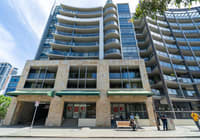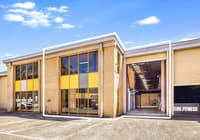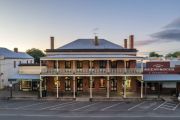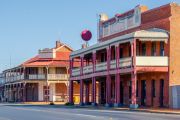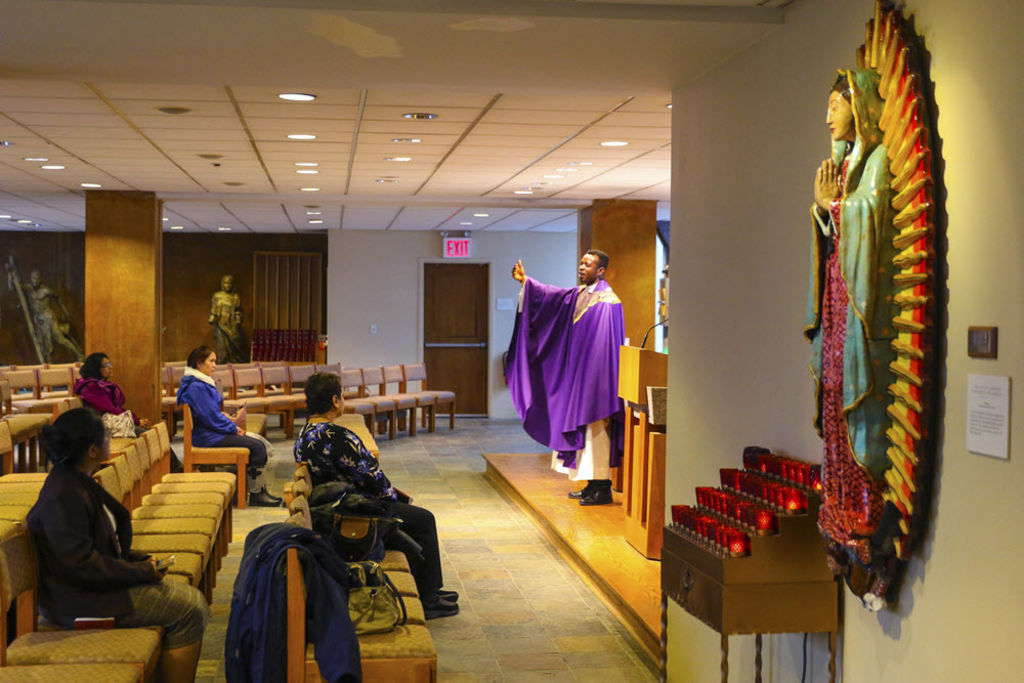
Chapel that survived September 11 attacks may not survive rent increase
Sharon Otterman
In the stench and smolder that followed the September 11 attacks, emergency workers ripped the pews out of the little Roman Catholic chapel opposite the World Trade Centre site in Battery Park City, in Manhattan, and used the church as a command station.
As the weeks passed, the pastor erected a tent outside to celebrate Mass. The interior was used by the workers at ground zero as a place for food, rest and counseling.
When residents of Battery Park City began returning home three months later, they were determined to restore the chapel, St. Joseph’s.
So the parish held a national fundraising drive. It commissioned sacred artworks for the space to amplify the theme of rebirth. The chapel was rebuilt as both a prayer space and a Catholic memorial to the horrors and heroism of September 11, 2001.
In 2005 Cardinal Edward Egan officiated at the rededication. In a spot that for so long had felt like a war zone, it was a sign that life again bloomed.
Now the little chapel itself is on the verge of destruction.
As a result of the neighborhood’s recovery, which the chapel helped bring about, St. Joseph’s rent more than tripled in 2014 to $264,000 a year. Since then, the parish has been borrowing money from the Archdiocese of New York to cover the cost, but the parish’s new pastor and its Finance Council have decided that the debt is not sustainable.
The archdiocese is in negotiations to reduce the rent with LeFrak, the family real estate behemoth, which along with the Fisher and Olnick families is the landlord of Gateway, the residential development where the chapel is.
According to parishioners, there has been an offer to reduce the rent from $US80 to $US70 per square foot, or about $US230,000 ($305,080) a year, but that, they say, is still too much for the parish.
Parishioners say their pastor, the Reverend Jarlath Quinn, has informed them that the chapel will close by June unless a miracle occurs. They are expecting to hear from the landlord about possible further rent reductions.
The fight to save the chapel is led by a small, mostly female group of Battery Park City parishioners, most of whom lived through the attacks and cherish the chapel as a link to September 11. The group has been trying to raise a public outcry about the closing and promote fundraising.
What is confusing matters, they say, is that their own pastor has been steadily reducing the chapel’s role in the parish rather than embracing their efforts.
To save money, St. Joseph’s Chapel is closed on weekday mornings and on Saturdays, when tourists often want to visit. Its long-standing, thriving religious instruction program for children has been moved about 800 metres away to the main church in the parish, St. Peter’s, just north of the World Trade Centre site.
St. Joseph’s is the only house of worship in Battery Park City, a park-filled, state-run enclave of roughly 13,000 residents just west of the World Trade Centre site. Once a largely middle-class neighbourhood, it is now a place of luxury apartments and high-end shopping malls.
“The world ended, and everyone said, ‘Never forget’,” said Amy McCarthy Koethe, 52, a parishioner whose memories of the attacks are so vivid that she still cries when she recounts them. “We are essentially making people forget, because we have basically sanitised Battery Park City of every single reminder of the attacks.”
She added, “We are fighting to keep this open, but we are also uncertain about the intentions of the archdiocese and our current pastor, which makes it very disheartening.”
Some opacity surrounds the church’s situation. The archdiocese says that the decision to close the chapel lies squarely with the parish and that it has not threatened to cut off the loans to cover the rent.
“They are trying to be good stewards of not only the parish’s money, but also the archdiocese’s money,” said Joseph Zwilling, the archdiocese spokesman, referring to the parish’s leaders.
St. Joseph’s pastor, Reverend Quinn, referred all questions about St. Joseph’s Chapel to Mr Zwilling.
Since Reverend Quinn’s arrival in July, the parish website has posted its financial balance sheet. For the year that ended August 31, rent, real estate taxes and fines for St. Joseph’s Chapel came to $369,000, it states, but the chapel’s collections were only $164,000.
The parish, which consists of St. Peter’s, St. Joseph’s and another downtown church, Our Lady of the Rosary, borrowed $540,000 from the New York Archdiocese last year to cover the rent and other deficits, the financial statement states. Parishes are supposed to be self-sustaining and pay an annual tax of 8 per cent of collections to the archdiocese.
“The trustees and the members of the Finance Council believe that this significant operating loss is not sustainable and that parish expenses must be brought in line with operating revenue,” the balance sheet states.
The parishioners say Reverend Quinn has told them that means they will vacate St. Joseph’s this spring unless something changes, even though the lease ends in 2019.
The apparent decision to stop borrowing money for rent perplexes both the parishioners and a former pastor, the Reverend Kevin Madigan, who led the chapel on September 11 and through its rededication.
“It’s not like a debt collector is going to come after you,” Reverend Madigan said. “The archdiocese doesn’t come after parishes to pay them back loans.”
Mr Zwilling said the loans would need to be repaid only if the parish came into a financial windfall, such as from a sale of property.
St. Joseph’s Chapel is an unassuming, low-ceilinged place, tucked into the ground floor of the residential complex behind the tall office towers that line the West Side Highway. It was moved to its current location, about a block and a half from the World Trade Centre site, in 1983; the original church next to the twin towers was demolished to make way for an office building that was never built. There are three Masses each Sunday. During the week, workers visit at lunchtime.
Because of the small space, it is easy to see everyone who comes to services, creating a sense of community, Reverend Madigan said. “Basically, it was hard to get lost there,” he said.
Kate Megna, 31, who was praying before noon Mass at the church on a recent weekday, said, “It’s not grand, like St. Patrick’s Cathedral. You are here for your faith and for God. It’s very pure.”
The core of parishioners who are fighting for the chapel to stay open point to the intensive effort by the Greek Orthodox Church two blocks away to rebuild St. Nicholas Church, which was destroyed on Sept. 11 and is soon to reopen as a national shrine. Roughly $38 million was raised for the striking project, on the southern end of the World Trade Center site.
But the possible closing of St. Joseph’s Chapel has not been the subject of a fundraising effort by the archdiocese, or even a public statement by Cardinal Timothy M. Dolan, the archbishop.
“The cardinal has confidence in the pastor and people of the parish that they will do what is appropriate for the overall good of the parish,” Zwilling said.
As rent negotiations continued, the LeFrak organization provided a statement: “Gateway has generously and unilaterally offered a significant reduction in rent to the church — well below the rent called for by the church’s lease — as a community gesture to Battery Park City and awaits resolution from the church.”
And the Battery Park City Authority, the state-run agency that parishioners hope will intervene, said it could only hope for the best.
“While the state has no role in the discussions between the church and its landlord, St. Joseph’s is an iconic part of the neighborhood, and we hope the parties can reach an agreement that allows the church to remain in its location,” it said in a statement.





